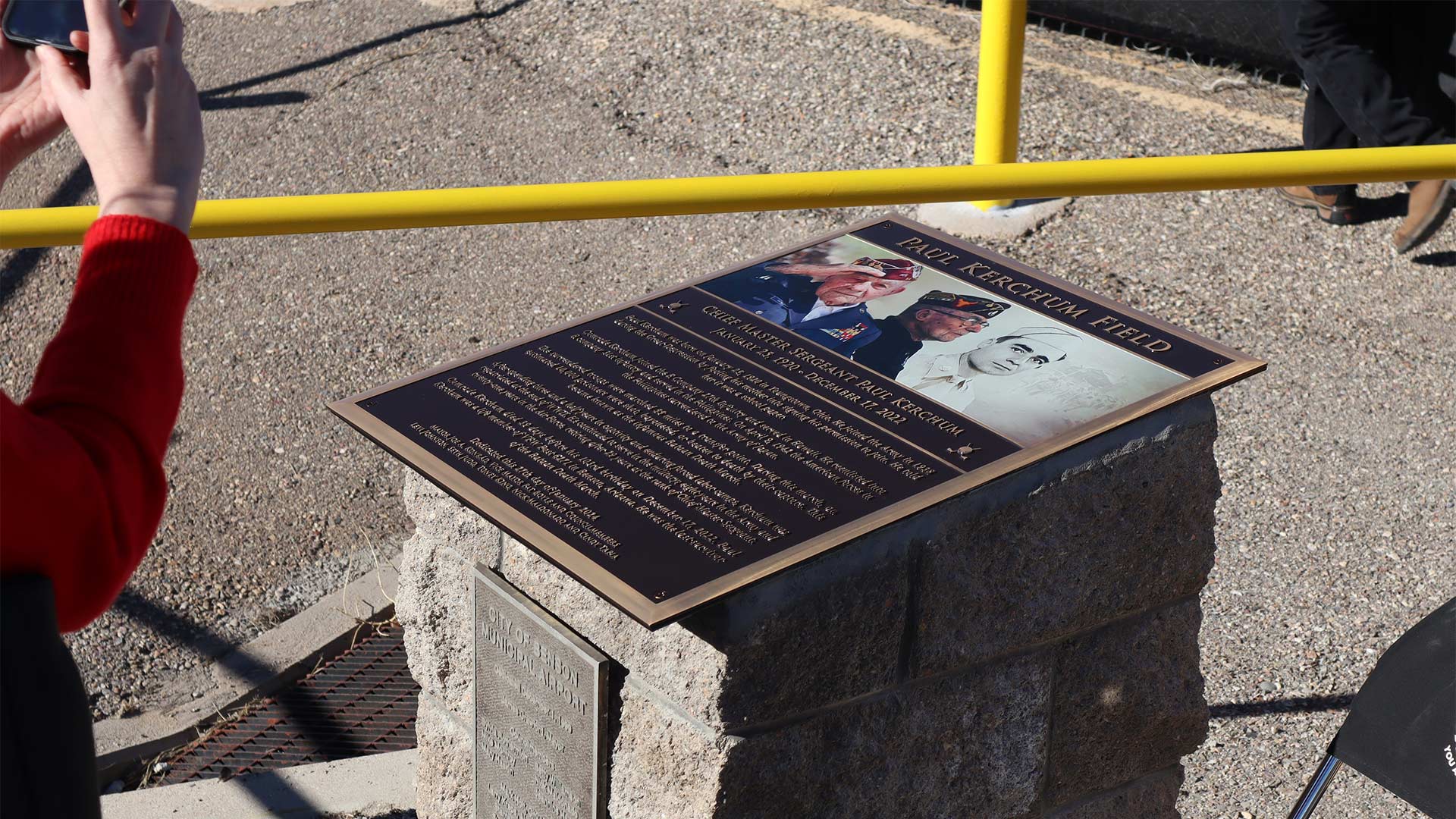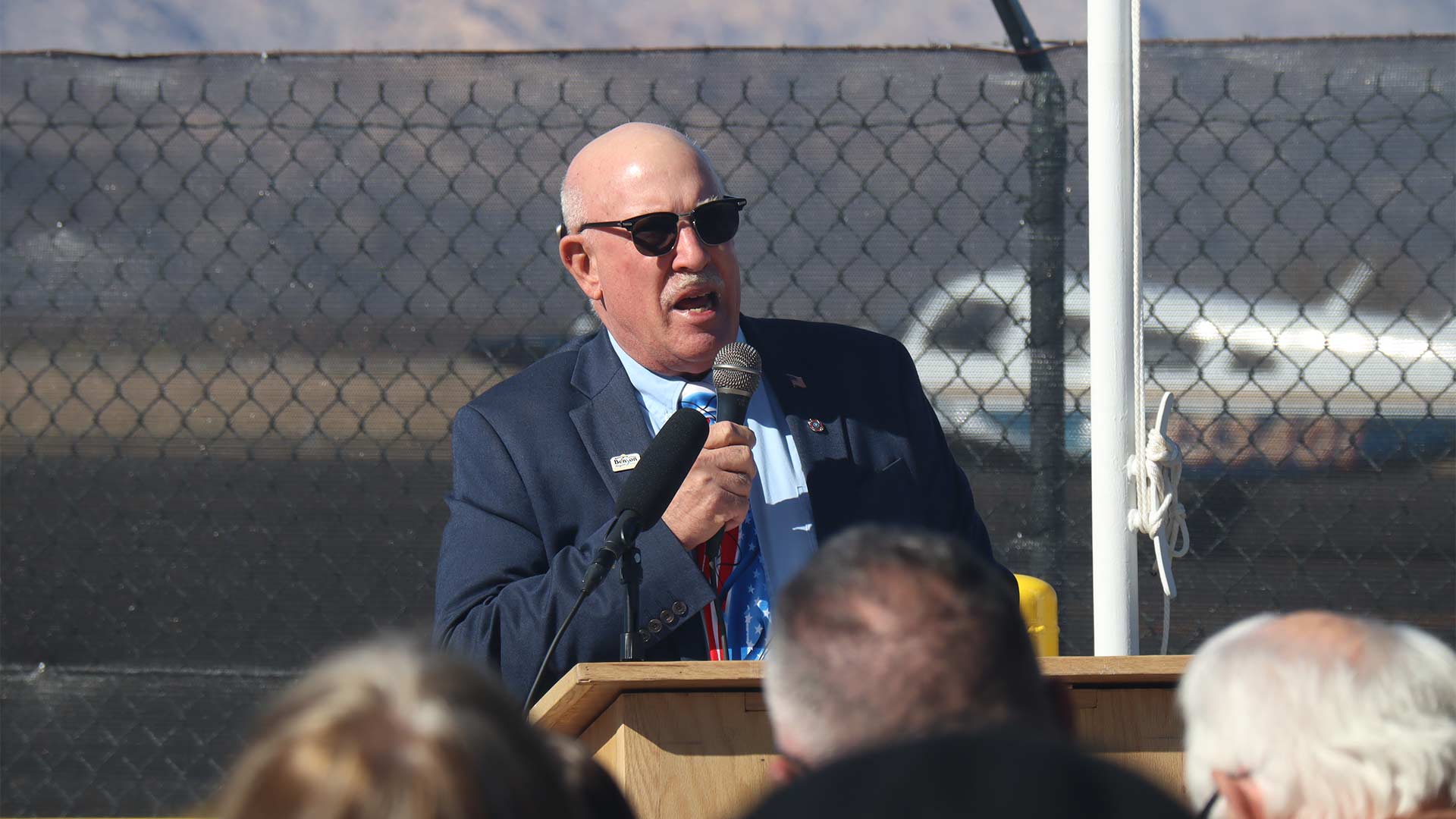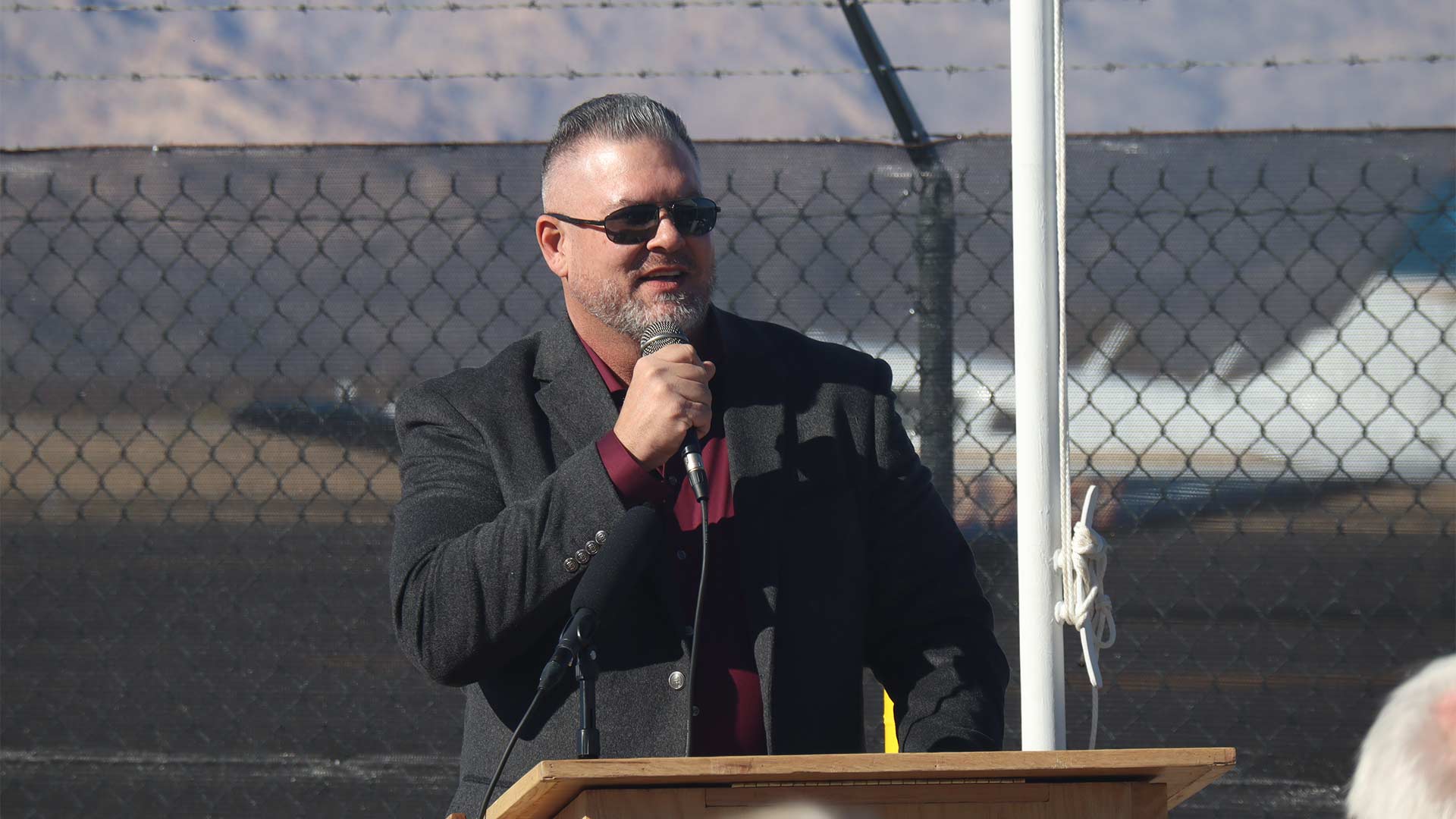 A plaque dedicating the Benson Airport to the late Ret. Chief Master Sergeant Paul Kerchum, who lived in Benson for around 60 years. The airport was named after Kerchum officially in August 2023.
A plaque dedicating the Benson Airport to the late Ret. Chief Master Sergeant Paul Kerchum, who lived in Benson for around 60 years. The airport was named after Kerchum officially in August 2023.
The Benson Airport was recently dedicated to the memory of the late retired Chief Master Sergeant Paul Kerchum. He was a longtime Benson resident and one of the last survivors of the Bataan Death March in the Second World War.
The Airport was renamed the Benson Municipal Airport Paul Kerchum Field last August. Benson Mayor Joe Konrad said the idea to name the airport after Kerchum came to him while he attended Kerchum’s memorial service.
“After Paul died, course they had the funeral ceremony here in town and then went on to the Veterans Memorial ceremony in Sierra Vista," Konrad told AZPM. "And when I stood there and saw the fighter jets fly over break into the missing man formation, it just triggered, you know, this guy was in the Army, he was in the Air Force, we have an airport that deserves his name.”
One of the advocates to dedicate the airport to Kerchum was Veterans of Foreign Wars Post 6271 Judge Advocate and District 7 Commander Dennis Bringham.
He said the VFW named their dining hall after Kerchum. Considering that the Air Force has used the Benson Airport for training in the past, Bringham said it makes sense to name it after Kerchum — who spent 21 years in the Air Force.
“It would be super appropriate for an Air Force veteran of his stature to have his name attached to that airport,” said Bringham.
 Benson Mayor Joe Konrad spoke at the dedication of the Benson Airport to Ret. Chief Master Sergeant Paul Kerchum, who passed away at age 102 in December 2022.
Benson Mayor Joe Konrad spoke at the dedication of the Benson Airport to Ret. Chief Master Sergeant Paul Kerchum, who passed away at age 102 in December 2022.
Kerchum was one of the last survivors of the Bataan Death March, where 75,000 — about 12,000 Americans and about 60,000 Filipinos — became prisoners of war according to the U.S. Army.
Kerchum described his experience of the deadly march to the National World War II Museum in 2022.
"After 93-days of fighting under half rations, obsolete weapons, and against overwhelming odds, General King, the commander of the Army on Bataan after much soul searching knowing that help was not coming on the way, knowing the poor condition of his army, and knowing that General Yamashita … the "Tiger of Malaya" ... had just entered the Philippines with reinforcements, decided that there was no more use for any more fighting, decided to surrender the troops on Bataan," Kerchum said to the National WWII Museum during an interview to capture the oral history. "The death march started, 45 miles from Marvalis to the San Fernando railhead … Men were shot, beheaded or beaten to death on that hot, dusty road.”
Bringham said 10,000 troops died on that march.
"It was about a 65-mile march without food and water," Bringham said. "And if you lagged behind, they bayoneted you, they shot you, they beat you," said Bringham. "And then, three and a half years in captivity in a labor camp in Japan. No one can imagine the horrific things the man witnessed.”
After the war, Kerchum served 21 years in the Air Force. His grandson Marc Desmarais said he lived in Benson for about 60 years.
 Marc Desmarias, grandson of the late Ret. Chief Master Sergeant Paul Kerchum, spoke at the dedication of the Benson Airport in Kerchum's honor. January 27, 2024.
Marc Desmarias, grandson of the late Ret. Chief Master Sergeant Paul Kerchum, spoke at the dedication of the Benson Airport in Kerchum's honor. January 27, 2024.
“My grandfather was maybe 5’5 in his prime, wore, like six and a half size shoes," said Desmarais. "But he was always larger than life. You know, when he walked into the room, everybody knew who he was and knew what he’d been through. And I don’t think it really hit me till later on in life, I joined the military myself, and just what that meant … That was the kind of man my grandfather was. He wasn’t scared to tell the truth, no matter how hard it hurt."
Konrad said it was important for the city to honor Kerchum because, “There’s so many people that would have gone a different path and he chose not only to re-enlist after what he went through but to preserve that into history for time in memorial. So how do you not wrap that into something that belongs in the city of Benson. We’re just so proud that he was a part of it.”
Kerchum died in December 2022, at 102 years of age.

By submitting your comments, you hereby give AZPM the right to post your comments and potentially use them in any other form of media operated by this institution.